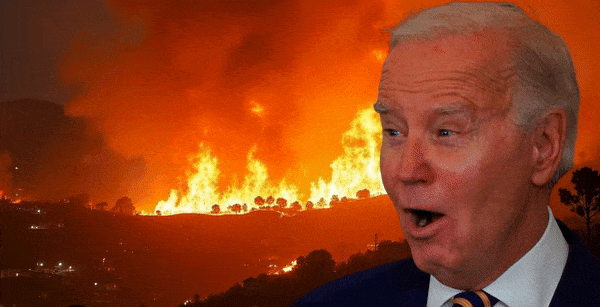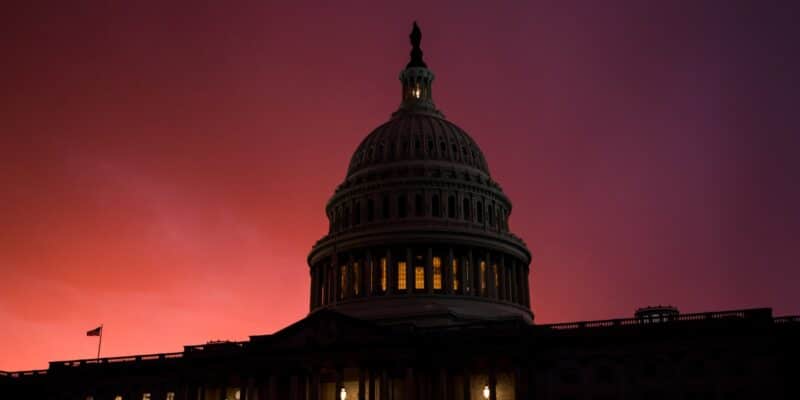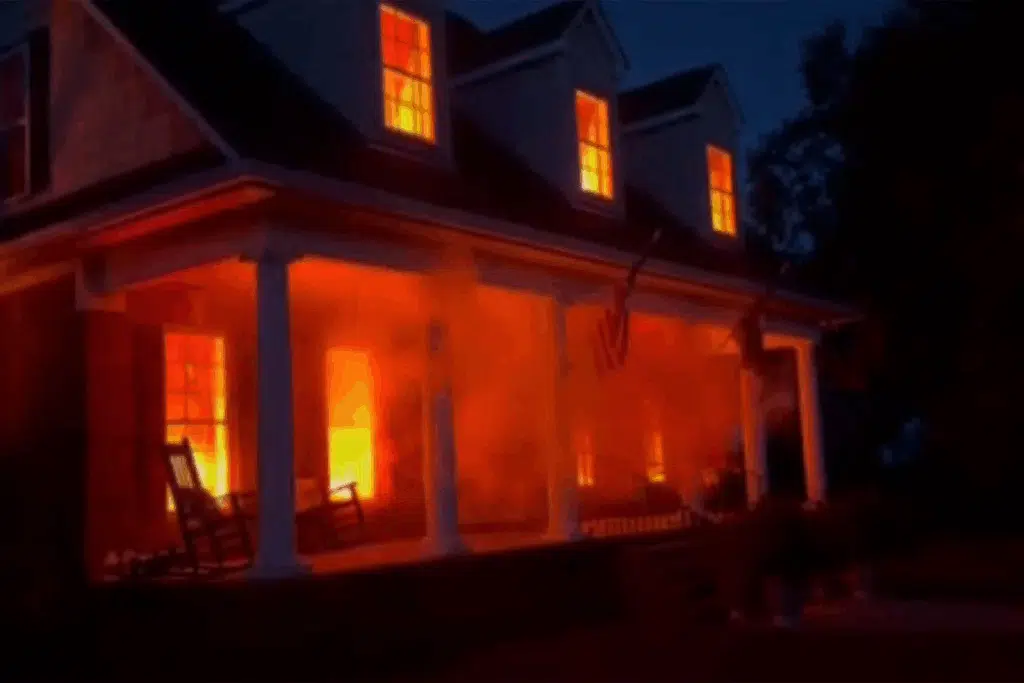
Did President Biden Make Fires Worse at the Beck and Call of an Environmentalist Group?
As fires ravage the Carolinas and South Carolina Gov. Henry McMaster declares a state of emergency, I remember how my brother and I spent long, hot summers in rural Colorado, cleaning up dry brush and dead wood to protect our mountain home from fires. My father, a volunteer fireman, taught us the importance of forest management from a young age, because it was essential to protect us from harm.
For this reason, I was horrified to learn that President Joe Biden had issued an executive order that might prevent this forest clearing in the name of protecting “old-growth forests.” Rather than allowing for the three strategies to prevent forest fires—targeted logging, controlled burns, and cleaning brush from the forest floor—his administration promoted a top-down bureaucratic approach that might have contributed to some of the horrific wildfires Americans have suffered in California and the Carolinas this year.
“The Biden administration unquestionably diverted time and energy away from addressing the overwhelming wildfire and forest health crisis that is the true threat to forest stands of every age class,” Rep. Bruce Westerman, R-Ark., told The Daily Signal.
Westerman, who chairs the House Natural Resources Committee, warned that “mismanagement of our forests can have dire consequences.” However, he promoted the bipartisan “Fix Our Forests Act,” which he claimed will “help land managers address this issue head on.”
The issue has taken on renewed importance amid devastating fires on both coasts. In January, major fires like the Palisades Fire and the Eaton Fire burned more than 47,000 acres of land in the Los Angeles metropolitan area. California released new statewide fire maps that show 1.4 million acres of land in high and very-high risk zones, up from roughly 800,000 in older maps. At least 29 people have died in the fires.
Meanwhile, South Carolina’s governor declared a state of emergency amid the Table Rock Fire in the Blue Ridge Mountains on Saturday. As of Wednesday morning, the fire, which started Friday, has burned an estimated 2,293 acres. Meanwhile, the Black Cove Complex Fire and the Deep Woods Fire had burned an estimated 6,000 acres by Tuesday evening in Western North Carolina, the same region devastated by Hurricane Helene.
What Did Biden Do?
Biden issued Executive Order 14072 on Earth Day, April 22, 2022. The order, “Strengthening the Nation’s Forests, Communities, and Local Economies,” ordered federal agencies to create an inventory of “old-growth forests” and strategies to preserve them. Where did his administration get this idea?
Climate activist groups like the Natural Resources Defense Council had urged the administration to “embrace a bold new vision for forest protection.” Among other things, the NRDC claimed that “mature, old-growth, and intact forests and trees have unparalleled, irreplaceable value for the climate and biodiversity, with intact forests storing 30-70% more carbon than logged forests.”
Climate alarmists claim that burning fossil fuels will bring about worsened conditions across the globe, but their predictions have repeatedly failed. For instance, Al Gore predicted that there would be no snow on Mount Kilimanjaro by 2020, but it continues to snow on the mountain in Tanzania. Climate alarmists like Biden have claimed that climate change has made hurricanes worse, but the science and data don’t bear that out.
Even if increasing levels of carbon dioxide in the atmosphere poses a problem, that must be balanced alongside important considerations like the economic value of wood and the prevention of forest fires.
The Forest Service published regulations implementing Biden’s order in December 2023, and the NRDC urged its members to engage in the public comment period, backing the regulations. As I noted in my book, “The Woketopus: The Dark Money Cabal Manipulating the Federal Government,” the NRDC had close ties to the Biden administration and it hired multiple Obama administration staff to lead the organization, including former EPA head Gina McCarthy.
Among other things, the regulations called for “proactive stewardship activities” to “promote” the “amount, density, and distribution of old trees, downed logs, and standing snags.” In other words, the regulations call for prioritizing the prevention of the clearing of the forest floor, which is vital for mitigating the spread of wildfires.
After Trump won the 2024 presidential election, the Biden administration revoked the regulations. The NRDC did not respond to The Daily Signal’s request for comment by publication time.
Enabling More Fires
Tim O’Hara, president of the Forest Resources Association, praised the withdrawal of the regulations, but noted that the executive order may have had a lasting negative impact on Americans’ ability to prevent fires.
“The uncertainty surrounding Biden’s executive order and its potential restrictions on forest management may have delayed management decisions that would have provided timber to the market and further mitigated wildfire risks,” O’Hara told The Daily Signal.
“Managing our national forests across the U.S. is simply not a one-size-fits-all approach,” he added. He said forest management is best handled at the local level, “where unique forest conditions, including recreation, wildlife habitat, and timber production, can be addressed directly.”
“Over the past three decades, the management of federal forest lands has led to significantly higher tree mortality rates than nonfederal landownerships,” he noted. “These elevated mortality rates contribute to increased fuel loads, which have led to more intense wildfires.”
Nick Smith, who handles public affairs at the American Forest Resource Council, warned that poor forest management and restrictions on logging worsen the risk of forest fires.
“Our federal forests are unnaturally overgrown, and as a result, they are dead and dying and fueling today’s megafires,” he told The Daily Signal.
“Biden’s political and self-defeating push to save ‘old growth’ made it much more costly and bureaucratic to properly manage national forests,” Smith added. “Since he signed the ‘Earth Day’ executive order in 2022, the Biden administration hamstrung the Forest Service’s ability to implement forest projects that would reduce the risks of wildfires and toxic smoke.”
“It absolutely had a chilling effect on the timber industry,” he added. “Timber harvests on federal lands, which had been increasing since the Obama era, declined while Biden was in office.”
Smith argued that Biden’s executive order “launched a process that consumed agency staff and resources that should have been devoted to addressing the growing forest health and wildfire crisis.” He noted that the proposed regulation would have “simultaneously amended all 128 Forest Plans across the nation at once, adding more red tape to forest management and transferring decision-making from local public lands managers to political appointees in Washington.”
Forest Service Data on Fires
Smith also cited Forest Service data showing that “tree-cutting effects” are associated with more wildfire resilience among old growth forests.
“Since 2000, over 700,000 acres of old growth forests have been destroyed in severe wildfire, and another 182,000 acres to insects and disease,” he noted. The Forest Service found that 400,000 acres of old growth experienced “tree-cutting effects,” and on 92% of those acres, the tree cutting improved or maintained conditions for the forests, improving wildfire resilience.
“Forests in areas reserved from active management, such as wilderness areas, have seen greater losses of old growth than forests where limited timber harvest is allowed,” Smith added. “In contrast, old growth forests actually increased on managed forests where logging is allowed.”
The Forest Service did not respond to The Daily Signal’s request for comment by publication time.
MOG-Threats-Intro Final Jan 2024Download
The federal government should encourage forest management, not regulate it out of existence in a wrongheaded top-down climate alarmist approach. Logging, brush-clearing, and controlled burns are essential to keep fires in check—and it’s long past time the federal government stopped getting in the way of local forest management.



